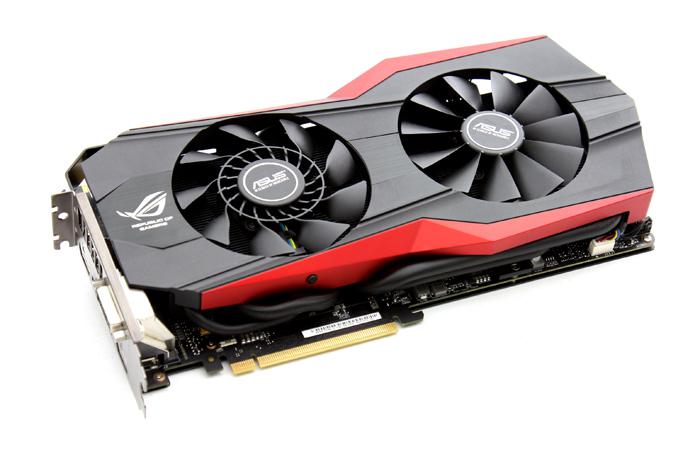Introduction
ASUS GeForce GTX 980 ROG Matrix - A Blue or Red pill?
Join us on another ROG product review, it is the ASUS GeForce GTX 980 Matrix Platinum being tested today. This product has been designed for the true aficionados that sub-zero cool the product in order to shatter a benchmark or two. it comes with a whopping 14-phase VRM. For the more regular folks there's still plenty off changes making this product super nice. It has a custom cooler, a custom PCB, quality components and a factory overclock, all that whilst staying silent. The card has 4 GB graphics memory, is energy efficient and factory overclocked for you. Oh and hey, it overclocks nicely as well to roughly 1500 MHz on the GPU boost frequency.
- Nvidia GTX 980 GPU with 1342 MHz GPU Boost Clock
- 4GB, 7010 MHz (effective) GDDR5
- 3 x DisplayPort, 1x HDMI, 1x dual-link DVI-I display outputs
- ROG color-coded load Indicator
- ROG Edition GPU Tweak
- DirectCU II cooler with CoolTech fan, 10mm matt-black heatpipes
- Extreme OC Features: Memory Defroster, Safe Mode,
- DIGI+ VRM power control with 14-phase Super Alloy Power and Black Metallic capacitors.
The PC market is interesting, it has been on a decline for sure, but here at Guru3D.com we've noticed an opposite trend. Gaming PCs are getting more and more popular, much like an American muscle car, or should we say card. We all want a beast of a gaming rig as, let’s face it, PC gaming as an experience is just so much better than anything else out there. Roughly a year and a half ago it became apparent that Nvidia was brewing a new GPU architecture under the codename Maxwell. Yes, named after the mathematical physicist. The Maxwell family of GPUs is actually the 10th generation of GPU architecture for Nvidia. With several design goals in mind (higher performance and lower power consumption) Nvidia was hoping to reach 20nm by the time their high-end product would be released. By September 2014 it was abundantly clear that the 20nm nodes were not yet viable for volume production of wafers with huge transistor counts. So Nvidia pretty much had to go with plan B and stuck with 28nm, this makes their silicon sizable, in relative proportions of course. None the less, Nvidia has moved forward and today the 2nd Maxwell based products (GTX 750 was actually the first trial) are being released as GM204 based GPUs. Yes, correct, GM204 and not GM210, meaning Nvidia is once again using the ‘high-end’ and not ‘enthusiast class’ chip to empower the product series we are about to review. Armed with voltage, power and load limiters, Nvidia these days can harvest massive performance out of chips when you think about it. They did the very same with Kepler really, GK104 versus GK110 anyone? So Nvidia certainly is doing something right. Today is testimony to that as we see two products performing in the GTX 780 Ti range of performance, but both will consume much less power. That’s actually a primary feature design target for Maxwell, more performance with less power consumption. The GPU used thus is the 28nm GM204, and the two derivatives created from it are the GeForce GTX 970 and 980. Ah, you noticed? Yes, correct, Nvidia decided to skip the 800 series to avoid confusion with some of their rebranded mobile parts. Maxwell is a new and sound architecture and as such it is released with a new series name. In this article we will have an extensive look at the architecture behind Maxwell, we will look at gaming performance from Full HD to Ultra HD, we will look at power and thermal characteristics and will serve you that on a silver platter with a nice photo-shoot here at Guru3D.com, of course.
With a custom PCB, all dark design and the DirectCU Strix cooler the GTX 980 will get all the cooling it needs, with temps reaching a maximum of just under 0 Degrees C with nice low noise levels. In fact in idle or desktop mode, the fans won't even spin until they reach 67 Degrees C. The air cooling based solution has 10 mm-thick heat pipes and two fans. Nice are the all black heatpipes and radiator fins. And how does a 1241 MHz core GPU clock frequency with a 1342 MHz Boost frequency sound eh? Tweaked you will reach close to 1450~1500 MHz on this card fairly easily.


